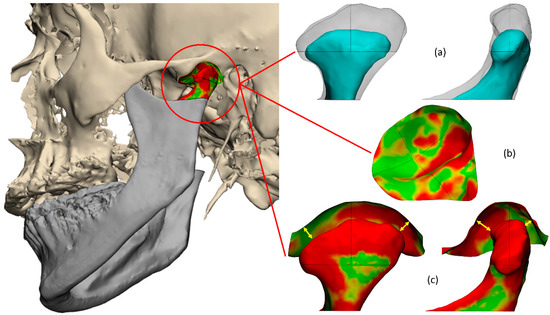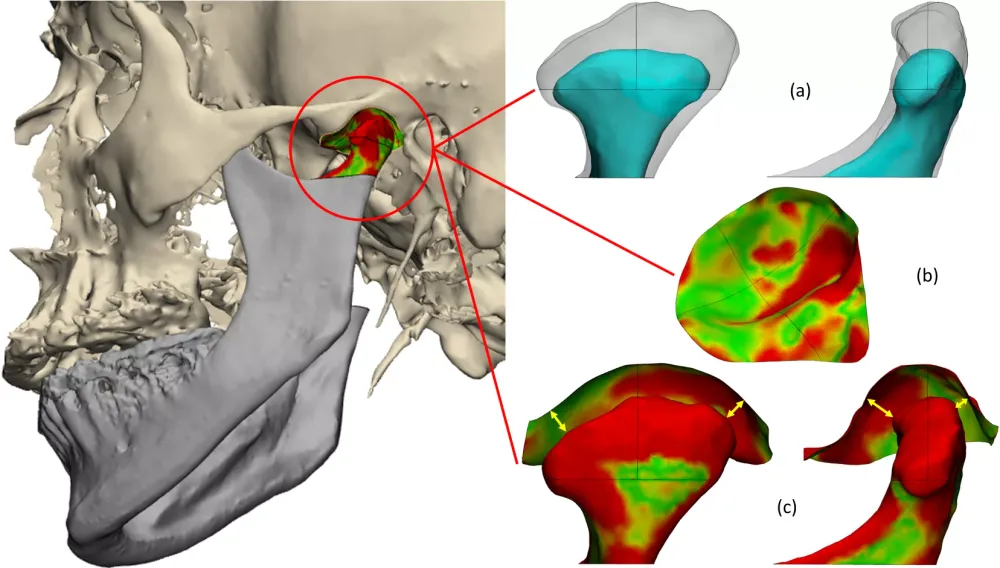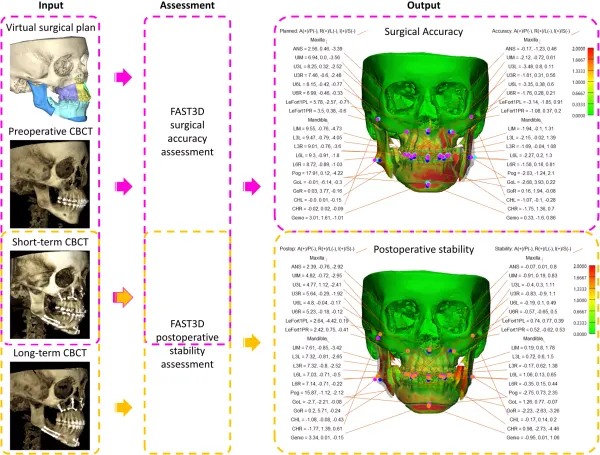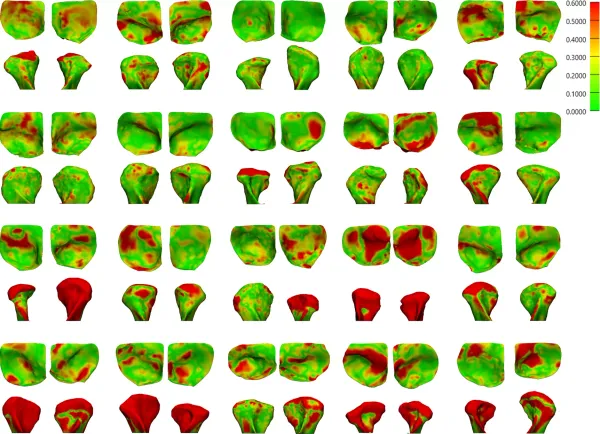A Semi-Automatic Approach for Holistic 3D Assessment of Temporomandibular Joint Changes
Authors
Holte MB, Sæderup H, Pinholt EM

Abstract
Objectives
The literature lacks a reliable holistic approach for the three-dimensional (3D) assessment of the temporomandibular joint (TMJ) including all three adaptive processes, which are believed to contribute to the position of the mandible: (1) adaptive condylar changes, (2) glenoid fossa changes, and (3) condylar positional changes within the fossa. Hence, the purpose of the present study was to propose and assess the reliability of a semi-automatic approach for a 3D assessment of the TMJ from cone-beam computed tomography (CBCT) following orthognathic surgery.
Methods
The TMJs were 3D reconstructed from a pair of superimposed pre- and postoperative (two years) CBCT scans, and spatially divided into sub-regions. The changes in the TMJ were calculated and quantified by morphovolumetrical measurements. To evaluate the reliability, intra-class correlation coefficients (ICC) were calculated at a 95% confidence interval on the measurements of two observers. The approach was deemed reliable if the ICC was good (>0.60).
Results
Pre- and postoperative CBCT scans of ten subjects (nine female; one male; mean age 25.6 years) with class II malocclusion and maxillomandibular retrognathia, who underwent bimaxillary surgery, were assessed. The inter-observer reliability of the measurements on the sample of the twenty TMJs was good to excellent, ICC range (0.71–1.00). The range of the mean absolute difference of the repeated inter-observer condylar volumetric and distance measurements, glenoid fossa surface distance measurements, and change in minimum joint space distance measurements were (1.68% (1.58)–5.01% (3.85)), (0.09 mm (0.12)–0.25 mm (0.46)), (0.05 mm (0.05)–0.08 mm (0.06)) and (0.12 mm (0.09)–0.19 mm (0.18)), respectively.
Conclusion
The proposed semi-automatic approach demonstrated good to excellent reliability for the holistic 3D assessment of the TMJ including all three adaptive processes.






